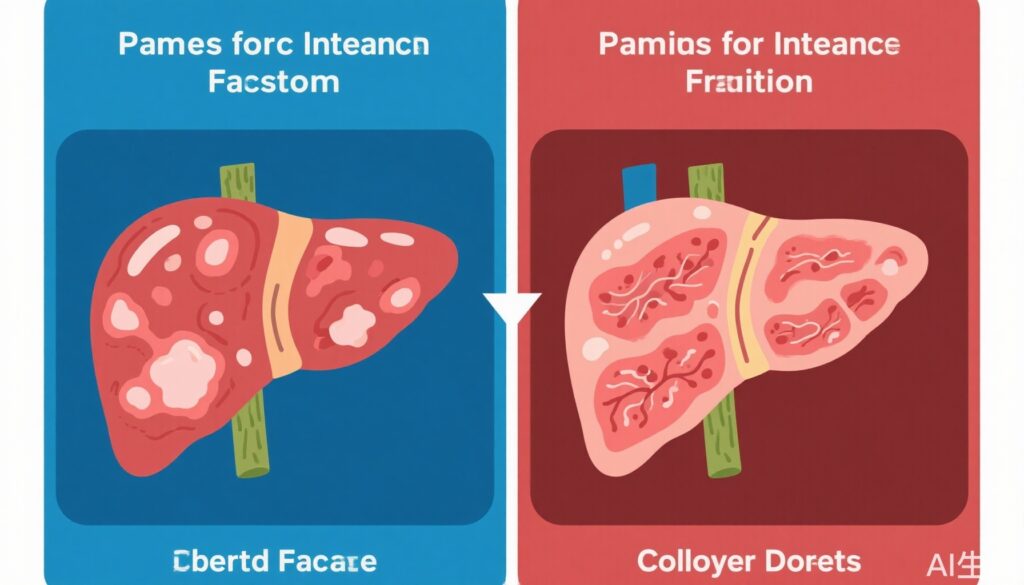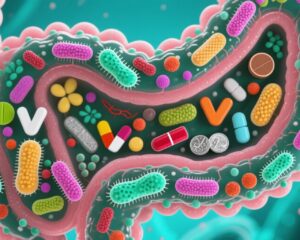Highlight
1. Both intermittent fasting (IF) and low-calorie diets (LCD) improved anthropometric and liver enzyme measures in MAFLD patients.
2. Low-calorie diet showed significantly greater reduction in liver steatosis and fibrosis compared to IF.
3. LCD achieved a significant decrease in serum triglycerides, while IF did not.
4. Neither diet significantly altered inflammatory or oxidative stress markers over 10 months.
Study Background and Disease Burden
Metabolic-associated fatty liver disease (MAFLD), previously known as nonalcoholic fatty liver disease (NAFLD), has become one of the most prevalent chronic liver conditions worldwide. Characterized by lipid accumulation in hepatocytes unrelated to significant alcohol intake, MAFLD affects approximately 25% of the global population. The condition is closely associated with obesity, insulin resistance, type 2 diabetes mellitus, and metabolic syndrome, all of which enhance the risk of progression to nonalcoholic steatohepatitis (NASH), liver fibrosis, cirrhosis, and hepatocellular carcinoma. This progression leads to substantial morbidity, mortality, and increased healthcare costs.
Dietary interventions remain foundational in managing MAFLD given their direct impact on metabolic parameters and hepatic lipid content. Intermittent fasting (IF), especially the 16:8 regimen (16 hours fasting, 8 hours feeding), has attracted attention for potential metabolic benefits, including weight loss, improved insulin sensitivity, and modulation of lipid metabolism. Low-calorie diets (LCD), involving a sustained reduction in daily caloric intake, have long been recommended to achieve weight loss and improve metabolic profiles.
Despite widespread use, comparative evidence regarding the efficacy of IF versus LCD in improving liver pathology and metabolic parameters in MAFLD remains limited. This gap poses challenges in advising patients on optimal dietary strategies for liver health and overall metabolic improvement.
Study Design
This was a 10-month, single-blind, parallel-group randomized controlled trial conducted on 52 patients diagnosed with MAFLD. Patients were randomized to either a 16:8 intermittent fasting diet or a low-calorie diet. The IF group adhered to a daily fasting window of 16 hours, with all food consumed during an 8-hour feeding period. The LCD group followed a diet with a prescribed calorie deficit tailored to their baseline energy requirements.
Baseline and post-intervention assessments included anthropometric measurements (body weight, BMI), biochemical profiles (lipid panel, glycemic indices), liver enzymes (ALT, AST), liver steatosis and fibrosis evaluated via transient elastography (measuring controlled attenuation parameter in dB/m for steatosis and liver stiffness in kPa for fibrosis), and inflammatory and oxidative stress biomarkers.
Key Findings
Both diet interventions significantly improved anthropometric parameters and decreased liver enzyme levels, indicating enhanced liver function and metabolic status. However, no significant difference in the magnitude of these improvements was observed between the IF and LCD groups.
Notably, the LCD group experienced a significantly greater reduction in liver steatosis with a mean decrease of -52.40 dB/m compared to -44.63 dB/m in the IF group (P < 0.001). Correspondingly, liver fibrosis was significantly reduced in the LCD group (-0.74 kPa) but not meaningfully changed in the IF group (-0.004 kPa; P = 0.01).
Regarding lipid profiles, serum triglycerides decreased significantly in the LCD group by 24.08 mg/dL, whereas an increase of 11.22 mg/dL was observed in the IF group (P = 0.02). Other lipid parameters did not show significant changes between the groups.
Importantly, neither IF nor LCD produced statistically significant improvements in inflammatory markers or oxidative stress indices, suggesting moderate metabolic and hepatic benefits without significant modulation of systemic inflammation or oxidative damage over the 10-month period.
Expert Commentary
This randomized controlled trial reinforces that dietary modification is beneficial in MAFLD management but highlights nuanced differences in efficacy depending on the approach. The superior reduction of hepatic steatosis and fibrosis with LCD suggests that continuous caloric restriction may yield more profound hepatic improvements than time-restricted feeding alone.
Possible mechanistic explanations include more consistent energy deficit and substrate availability influencing lipid metabolism pathways. The unexpected increase in triglycerides with IF might reflect altered lipid mobilization or compensatory metabolic responses requiring further investigation.
The absence of significant changes in inflammation and oxidative stress markers may reflect the relatively short intervention duration or indicate that diet alone is insufficient to modulate these complex systemic processes robustly. Future research could explore adjunctive interventions targeting inflammation alongside dietary changes.
The study’s strengths include its randomized controlled design, use of objective liver imaging modalities, and comprehensive biochemical profiling. Limitations include the modest sample size, single-blind design, and the absence of long-term follow-up to assess sustained effects or clinical endpoints such as fibrosis progression or liver-related morbidity.
Conclusion
Both intermittent fasting and low-calorie diets offer meaningful improvements in metabolic and hepatic parameters in patients with MAFLD. However, low-calorie diet appears to confer superior benefits in reducing liver fat accumulation and fibrosis and improving serum triglycerides. These findings emphasize the complexity of dietary therapy in MAFLD and underscore the need for personalized nutritional strategies that consider patient preferences, metabolic status, and disease severity.
Clinicians should integrate these insights into holistic management plans, combining dietary advice with physical activity and pharmacotherapy when indicated. Further large-scale, long-duration trials are warranted to refine dietary recommendations and explore mechanisms influencing diverse metabolic outcomes in MAFLD.
References
Karimi M, Akhgarjand C, Houjaghani H, Nejad MM, Sohrabpour AA, Poustchi H, Mohammadi H, Chamari M, Imani H. The Effect of Intermittent Fasting Diet in Comparison With Low-Calorie Diet on Inflammation, Lipid Profile, Glycemic Index, Liver Fibrosis in Patients With Metabolic-Associated Fatty Liver Disease (MAFLD): A Randomized Controlled Trial. Clin Ther. 2025 Apr;47(4):e9-e16. doi: 10.1016/j.clinthera.2025.01.007. Epub 2025 Feb 5. PMID: 39915199.


